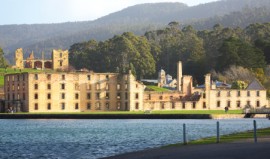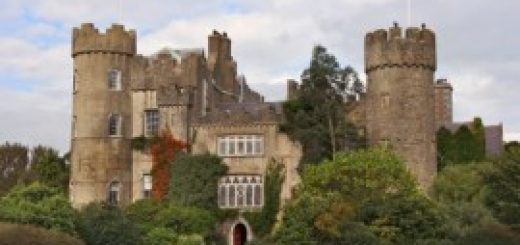Convict Records of Tasmania

Tasmania’s convict past was once considered a regrettable taint on the island’s early history. Today, the state’s convict sites are intriguing and valued relics of Tasmania’s fascinating colonial heritage. Let us take a deeper understanding of Convict records of Tasmania.
The First Convicts
The starters of our Convict records of Tasmania are ‘the first convicts’. In 1803, the British in Sydney Town – fearful of the colonial ambitions of the French and aware of the whaling and timber resources in the south – claimed Van Diemen’s Land in the name of King George III. But the British had another use in mind for this remote and untamed island – as an antipodean repository for re-offending convicts.
The first ship of inmates arrived from England in 1812, however, convicts had been arriving in Van Diemen’s Land as early as 1803 when the Lady Nelson travelled from Sydney to old Hobart town with 21 convicts on board.
For the first ten years of British settlement in Van Diemen’s Land there were more convicts than free settlers. This meant that convicts, as well as doing hard labouring work such as digging new coal mines, had to fill positions of responsibility such as medical assistants or ‘trusties’ in the gaols. Many, especially the women, were assigned to settlers as servants.
‘The Worst Description of Convicts’
In 1822 a convict settlement was established at Sarah Island on the rugged west coast of Tasmania. Located within the vast Macquarie Harbour, the island is on the brink of a vast tract of mountainous wilderness, rendering the site totally isolated from the settled south-east of the island. Such a site was considered by Lt Governor Sorrell as suitable for ‘the worst description of convicts’. However, the impenetrable wilderness surrounding the island did not deter escapees – those that did not perish often became bushrangers. Despite gaining a reputation as Australia’s severest penal settlement, Sarah Island was also a centre of a successful boat-building industry: in its time, Sarah Island was the largest shipbuilding yard in Australia.
The penal experiment – Port Arthur
With the ‘success’ of the convict labour at Sarah Island, the colony expanded its penal operation to a new settlement at Port Arthur, on the southeastern peninsula, now known as the Tasman Peninsula. The location was the ideal penitentiary as it is connected to mainland Tasmania by only a narrow isthmus.
The Port Arthur site was established in 1830 as a small timber station that made use of convict labour. The 1840s saw the consolidation of the industrial and penal nature of the settlement as the convict population surpassed 1100. In the late 1840s, Port Arthur became an experiment in convict rehabilitation, where nineteenth-century ideas about criminality and immorality informed the decision to create a model Separate Prison where convicts were prevented from making any contact with other inmates.
From Bad to Mad
Not surprisingly, insanity became a common affliction in the isolated convicts and the population of the prison hospital swelled. In 1864 the Asylum was established to deal with the increasingly infirm and aged prison population.
Port Arthur historian, Professor Henry Reynolds, reflects on the Tasmanian convict experience: “The thing about the convict system … was that in the early period up to 1840, it was an open prison. Convicts were everywhere and convicts made up part of every household practically. The Port Arthur experience is quite atypical of what you would say was the real convict Tasmanian experience. And on the whole it was a story of redemption, not a story of brutality and degeneration.”
This model for redemption is evident in the system of probation devised for convicts that had served their terms. Upon release from one of the penal settlements, a convict was given a paid job for a set period with one of the colony’s public works. At the end of this, he could get a paid job as a servant to a settler. But the colony’s public departments, denied extra funds by the British government, could not pay wages. And the settlers, not accustomed to paying their servants, were reluctant to cooperate with this new system. So jobs for the convicts did not materialise and probation stations became overcrowded. Crime, fighting and escapes increased. Escapees who were not recaptured survived by bushranging – living in the bush and robbing farmers and travellers.
Eventually, the British government admitted that transportation and probation, far from solving a problem, we’re creating one. In 1853, after about 74,000 convicts had been transported to Van Diemen’s Land, the system ended and the colony’s name was officially changed to Tasmania, a name that had been used unofficially for some time.
Sarah Island – One noteworthy point in the Convict records of Tasmania is the Sarah Island. The ruins of the once-notorious Sarah Island penal settlement (1822-1833) can be experienced by cruise from the fishing port of Strahan on Macquarie Harbour. The island is a part of a vast tract of Tasmanian wilderness protected under World Heritage status.
Port Arthur Historic Site – The Port Arthur Historic Site (on 125 hectares/309 acres) today is a world-class tourist attraction, with an interactive visitor centre and more than 30 historic buildings and ruins, set within beautiful gardens and native surroundings.
Tasman Peninsula Convict Trail – takes in seven locations in an area where Tasmania’s convict history is most concentrated. They include: Eaglehawk Neck, site of the famed Dog Line; the Coal Mines; Saltwater River and Wedge Bay. The Trail includes spectacular land formations along the coastline of the Tasman National Park. Read about the Tasman Peninsula’s convict past.
The Female Factory, Hobart – considered the female equivalent to Port Arthur: hundreds of women and children were gaoled there from 1828-1877, with many dying from poor hygiene, inadequate nutrition and backbreaking work. Female Factory Website.
Richmond – the majority of this historic town appears much as it would have done in the mid-nineteenth century, when convict labour was derigetour. The gaol, built in 1825, housed prisoners, including bushranger Martin Cash. Although tiny compared with Port Arthur’s immense scale, the gaol at Richmond is unique as the buildings and cells are intact and eerily reminiscent of their torturous past. Richmond has Australia’s oldest road bridge, built by convict labour in 1823.











